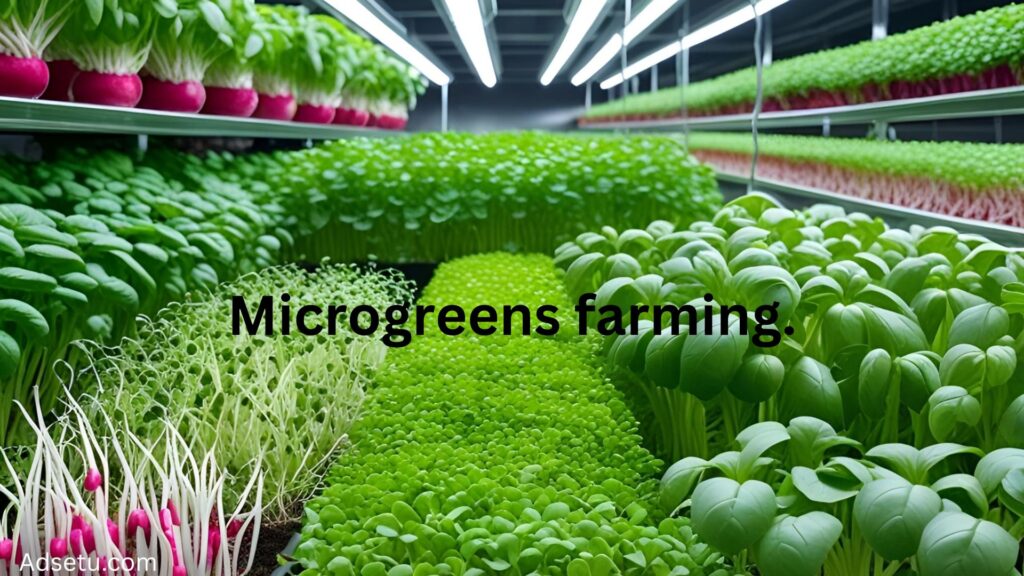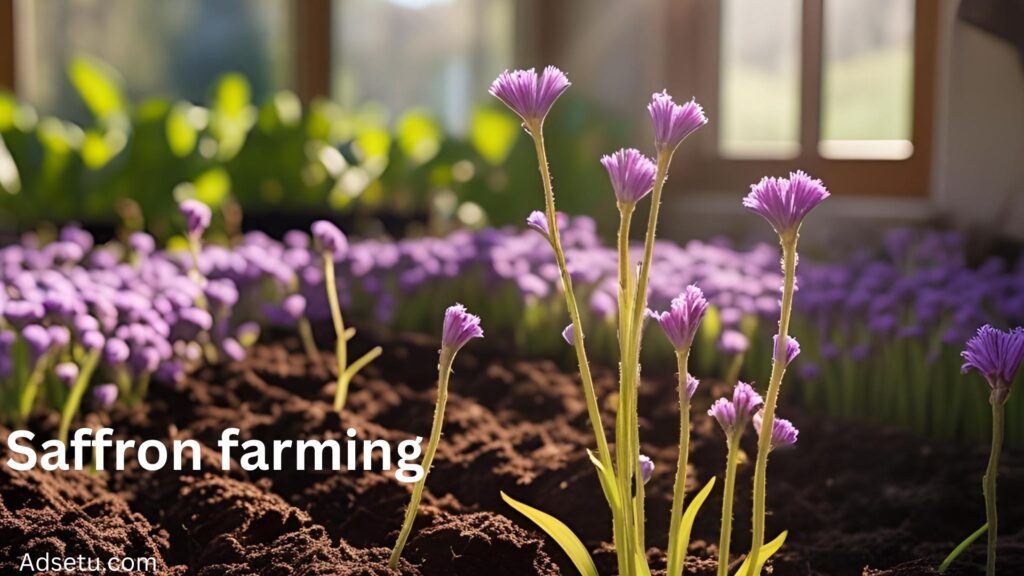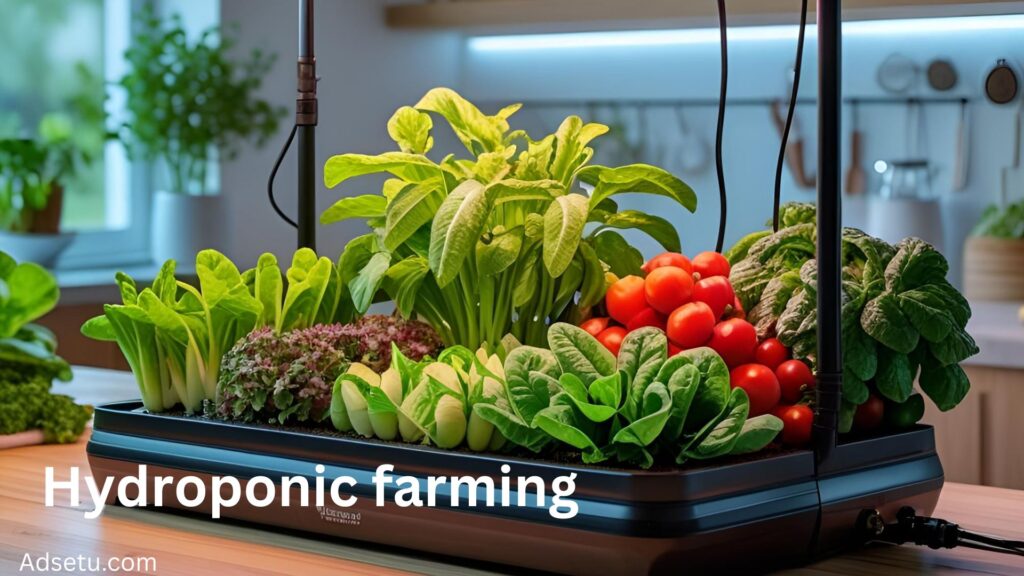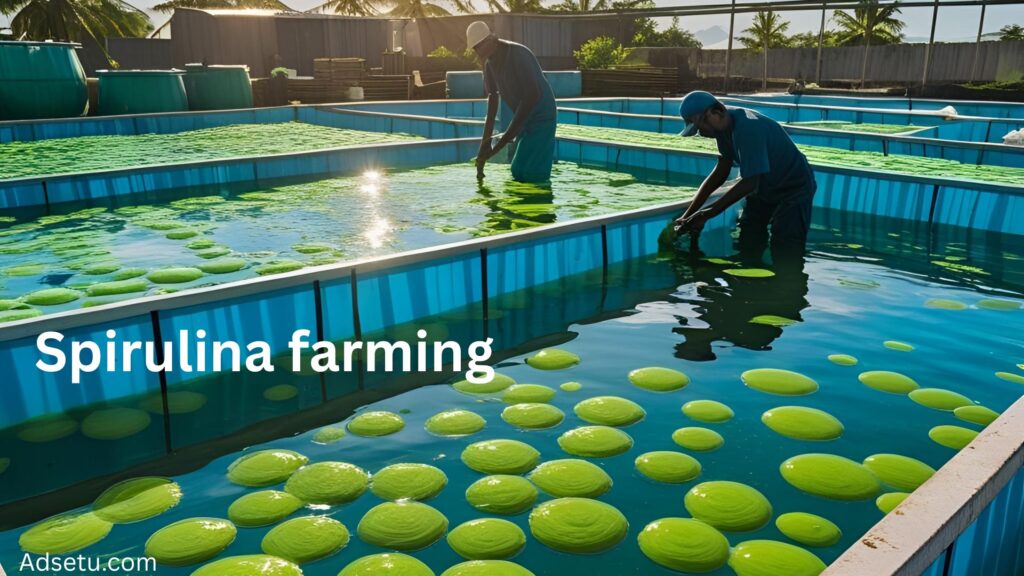Table of Contents
Agro business in ayurvedic medicine farming:

Agro business with Ayurveda Medicine Farming refers to the cultivation of medicinal plants and herbs that are used in Ayurvedic medicine — a traditional Indian system of natural healing. With rising global interest in natural and holistic health solutions, Ayurvedic farming is gaining traction as a profitable and sustainable agricultural alternative.
What Are Ayurvedic Plants?
Ayurvedic plants are herbs and natural substances used in Ayurvedic treatments. Some popular ones include:
- Ashwagandha – for stress and immunity
- Tulsi (Holy Basil) – for respiratory health
- Amla (Indian Gooseberry) – for immunity and digestion
- Neem – for detox and skin care
- Brahmi – for cognitive function
- Turmeric – anti-inflammatory
- Giloy – for immunity and fever
- Shatavari – women’s health
Economic Opportunities:
- Export Potential: Huge global demand, especially from the U.S., Europe, and Southeast Asia.
- Processing Units: Dried herbs, powders, capsules, essential oils.
- Contract Farming: Many pharma and wellness companies offer buyback agreements.
- Value-Added Products: Herbal teas, cosmetics, dietary supplements, oils.
Income Potential:
- Small Farmers: Income can range from ₹50,000 to ₹2 lakhs per acre annually, depending on the plant and market.
- Value Addition: Processing can multiply profits 2x to 5x.
- Niche Markets: Organic certification boosts income further.
Business Scope:
- Cultivation and Sale of raw herbs.
- Herbal Product Manufacturing (oils, powders, syrups).
- Rising among health-conscious consumers globally.
- Increasing use in natural skincare, immunity boosters, and stress relief.
- Supported by India’s promotion of AYUSH (Ayurveda, Yoga, Unani, Siddha,
Government Support in India:
- Ministry of AYUSH: Promotes cultivation, processing, and R&D.
- National Medicinal Plants Board (NMPB): Offers subsidies up to 30–75% for selected plants.
- ICAR & State Agri Depts: Conduct training programs.
- Financial Assistance: NABARD and other banks offer loans for herb farming and processing units.
- Export Facilitation: Support for organic certification and international marketing.
Microgreens farming:

A modern, profitable, and eco-friendly home farming business of microgreens can start even from home.
What are Microgreens?
Microgreens are young, edible greens harvested within 7–21 days of germination, right after the first true leaves emerge. They are nutrient-rich, flavor-dense, and used in gourmet dishes, health drinks, and wellness products.
Importance of Microgreens
- Nutritional Powerhouses: Contain up to 40x more nutrients than their mature counterparts (e.g., broccoli, kale).
- Health Benefits: High in vitamins (A, C, K), antioxidants, and minerals.
- Eco-friendly: Grown with minimal water, space, and no pesticides.
- Quick Yield: Harvest in just 1–3 weeks, ideal for fast ROI.
- Urban Friendly: Can be grown indoors, on rooftops, in balconies, or vertical farms.
Market & Demand
- Growing demand in urban areas due to health trends and wellness diets.
- Chefs and restaurants for garnishing and plating
- Health-conscious individuals and fitness communities
- Smoothie/juice bars and nutritionists
- Export potential to USA, UK, UAE, Singapore, etc.
- Strong demand in metros like Mumbai, Delhi, Bangalore, Hyderabad, etc.
Business Potential
Price of microgreens: ₹300 – ₹2000 per kg depending on type and packaging.
Infrastructure Required:
- Basic Setup:
- Growing trays or racks
- Coco peat or organic growing medium
- Good quality seeds (non-GMO, organic)
- Water spray bottles or misting system
- Grow lights (for indoor setup)
- Drying and packaging area
- Shelves or vertical units (for large-scale)
Investment Required:
Can start small with ₹15,000 – ₹30,000.
Income Potential:
- Per tray yield: 100–150 grams.
- 100 trays/month: 10–15 kg = ₹30,000 – ₹60,000 income.
- 500 trays/month: ₹1.5 – ₹3 lakhs+.
Selling price varies by type:
- Broccoli, radish, pea shoots, sunflower: ₹300 – ₹1000/kg
- Basil, kale, arugula, wheatgrass: ₹800 – ₹2000/kg.
Saffron Farming Business:

What is Saffron Farming?
- Saffron is a spice derived from the stigmas of the Crocus sativus flower. It is one of the most expensive crops in the world due to the delicate process of harvesting and limited growing regions.
- 1 gram of saffron requires around 150-170 flowers
- Known for its aroma, color, medicinal and culinary uses
Uses of Saffron:
- Food Industry: In sweets, biryani, saffron milk, tea, bakery.
- Ayurveda & Medicine: For skin health, immunity, fertility, mood enhancement.
- Cosmetics: Anti-aging creams, luxury skincare products.
- Religious rituals: In Hindu, Muslim, and Buddhist practices.
- Export: Huge demand in UAE, USA, Europe, China, Japan.
Market Potential:
- India: Major demand from Delhi, Mumbai, Hyderabad, Kerala, Tamil Nadu.
- Global: UAE, Saudi Arabia, USA, Germany, France, and more.
- Price: ₹150–₹250 per gram (even ₹500+ for high-grade saffron).
Selling Options:
- Direct to consumers
- Ayurvedic companies
- Hotels/restaurants
- Online (Amazon, Flipkart, your website)
- Exporters and spice traders
- Business Potential
- Profit margin: 50–70% if marketed directly.
- Great for landowners, farmers, women entrepreneurs, agri-startups.
Infrastructure Required:
- Land: Well-drained, loamy soil; hilly regions preferred (J&K, Himachal, Uttarakhand, NE India).
- Climate: Cool, dry summers & cold winters (ideal temperature: 15–20°C).
- Irrigation: Light drip irrigation; avoid overwatering.
- Storage: Cool, dark place for drying and storing saffron.
- Tools: Basic tools for weeding, harvesting, drying trays.
Support & Govt Schemes (India):
- National Saffron Mission (NSM) – Special programs in J&K.
- NABARD and Agri-loans.
- PM FME & MSME schemes for food businesses.
- Local agri-universities and Krishi Vigyan Kendras (KVKs) offer training.
Hydroponic Farming business:

Hydroponic farming is a method of growing plants without soil, using a nutrient-rich water solution to deliver essential minerals directly to the plant roots. This soilless technique is becoming increasingly popular due to its efficiency and sustainability.
Key Features:
- Soilless Growth: Plants are grown in water or inert media like coco peat, perlite, or rockwool.
- Nutrient Control: Growers have complete control over nutrients, pH, and water levels, which leads to faster and healthier plant growth.
- Water Efficiency: Uses up to 90% less water than traditional farming.
- Space Efficiency: Can be done in vertical stacks or urban spaces, making it ideal for cities and areas with poor soil.
Common Crops Grown Hydroponically:
- Leafy greens (lettuce, spinach, kale),Herbs (basil, mint, coriander), Tomatoes,
- Strawberries, Cucumbers, Lettuce (Romaine, Iceberg, Butterhead) ,Spinach,Kale,,
Types of Hydroponic Systems:
- Nutrient Film Technique (NFT): Thin film of nutrient solution flows over roots in a channel.
- Deep Water Culture (DWC): Roots float in a nutrient-rich, oxygenated water solution.
- Drip System: Nutrients drip directly to the base of each plant.
- Ebb and Flow (Flood and Drain): Periodic flooding and draining of nutrient solution.
- Wick System: Passive system where nutrients are drawn up through a wick.
- Aeroponics: Roots are misted with nutrient solution in an air environment (advanced form).
Profitability:
- Yield advantage: Up to 10–15 times more per square meter compared to traditional soil farming.
- Crop cycle: Shorter growth cycles — lettuce and leafy greens in 25–30 days.
Example:
1,000 sq. ft. rooftop NFT setup can yield up to 400–600 heads of lettuce per cycle (~30 days)
Selling at ₹50–₹80 per head, monthly revenue can reach ₹40,000–₹60,000
After costs (nutrients, electricity, labor), profit can be ₹15,000–₹25,000/month.
Spirulina Farming Business :

What is Spirulina?
Spirulina is a blue-green algae (cyanobacteria) that grows in alkaline water bodies. It is one of the most nutrient-dense superfoods in the world, rich in protein (up to 60–70%), vitamins (B-complex, E, K), iron, calcium, antioxidants like phycocyanin, and essential fatty acids. Spirulina can be consumed as a powder, tablet, capsule, or added to food and drinks.
Uses of Spirulina:
Spirulina has a wide variety of applications:
- Nutritional Supplement: Used in dietary supplements for boosting immunity, energy, and overall health.
- Protein Source: Especially popular among vegans, vegetarians, and athletes due to its high protein content.
- Animal & Aquaculture Feed: Used in poultry, fish, and shrimp feed for growth and pigmentation.
- Cosmetics: Used in skincare products for its anti-aging and detoxifying properties.
- Pharmaceutical Industry: Studied for potential in managing diabetes, cholesterol, and blood pressure.
- Health Beverages & Food Additive: Added in smoothies, juices, chocolates, and health bars.
Infrastructure Required:
To start a Spirulina farming business, you need:
- Open or Covered Space: Flat land with sunlight access. Covered tanks or greenhouses can improve quality and yields.
- Cultivation Tanks: Cement tanks or HDPE-lined pits (3-4 feet deep), filled with nutrient-rich water.
- Water Source: Clean and alkaline water with pH of 8–11. Borewell or filtered water is usually used.
- Aeration Setup: Paddle wheels or air pumps for circulation and oxygenation of the culture.
- Nutrients & Culture Media: Inputs like sodium bicarbonate, urea, potassium salts, and initial Spirulina inoculum.
- Harvesting Setup: Cloth filters, trays, and drying platforms or solar dryers.
- Processing Unit: For drying, pulverizing into powder, and packaging.
- Packaging Materials: Food-grade pouches or bottles for final product.
Raw Materials Needed:
- Spirulina mother culture (starter)
- Sodium bicarbonate, magnesium sulfate, potassium nitrate, urea or alternative organic fertilizers
- Freshwater and controlled pH environment
- Equipment for aeration and filtration
- Packaging material
Profit & Income Potential :
On a small scale (say 1000–2000 sq ft), one can expect monthly yields of around 10–15 kg of dry Spirulina powder. The market price of Spirulina powder ranges from ₹800 to ₹1200 per kg wholesale, and up to ₹2000 per kg retail, depending on quality and branding.
The initial investment can range from ₹1 lakh to ₹3 lakhs for a small setup, and the return on investment may be realized within 1–1.5 years if the marketing and sales channels are in place.
Support & Schemes
Various government schemes under MSME, agriculture, or startup support can be leveraged. NABARD and other agencies sometimes provide grants or low-interest loans. Some agricultural universities and CSIR labs also provide Spirulina culture and training.
–